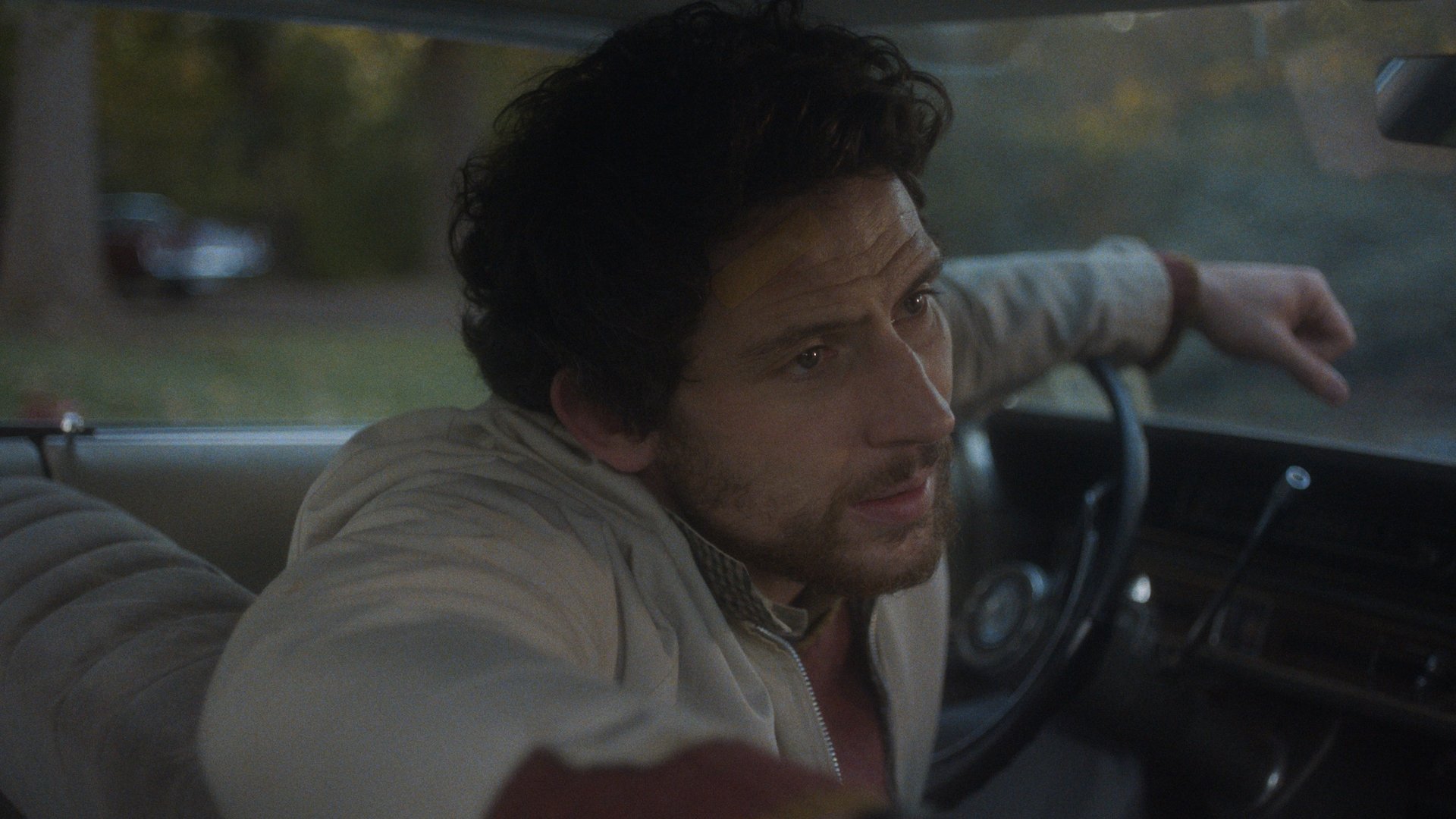In The Mastermind, an art heist’s aftermath unfolds against the backdrop of Vietnam War-era America
The new film The Mastermind opens with J.B. Mooney (Josh O’Connor) in a gallery, facing the camera, shoulders hunched and head cocked, presumably assessing a painting—perhaps for its artistic merit, but certainly for its monetary value, since he’s casing the museum for a heist.
Writer-director Kelly Reichardt’s previous film Showing Up (2022), starring Michelle Williams as an art-college administrator and ceramicist, surveyed a working life to see where art might fit in. Her new feature, which just had its world premiere at the Cannes Film Festival, ponders the spiritual and material worth of art in the wider context of Vietnam War–era America.
J.B. is a carpenter; maybe with help from his parents, he makes enough to keep his family, wife Terri (Alana Haim) and sons (Jasper and Sterling Thompson) in a vinyl-sided suburban ranch home. But he’s scuffling along, with no ambitions to his own contracting business, he says—he does not want to be the boss, on the phone all day. He wants something quicker, which he finds as the boss—the mastermind, per the film’s ironic title—of a smash-and-grab he maps out for a couple of fuck-up buddies to carry out with L’eggs nylons over their heads.
Alana Haim in The Mastermind © 2025 Mastermind Movie Inc. All Rights Reserved
We can tell that J.B. has artistic talent from the drawings he makes from memory of the robbery’s target: four Arthur Dove paintings, Willow Tree (1937), Yellow Blue Green Brown (1941), Tree Forms (1932) and Tanks & Snowbanks (1938), from the fictitious Framingham Art Museum. Reichardt imagines the museum with subtle, granular detail, evoking the aspirational, dutiful utility of the municipal museum to mid-century civic culture: dozy guards keep indifferent watch over minor works from major movements, scrutinised or passed over by an audience of teenagers with school assignments, restless kids dragged along by their parents, formally dressed retirees. When the heist occurs, early in the film, it prompts J.B.’s parents (Hope Davis and Bill Camp) to muse that they should really take advantage of their membership more often.
For the job, carried off without the friction of security cameras or high-tech alarm systems, Reichardt took inspiration from a similar robbery, in 1972, of the Worcester Art Museum, when two Gauguins, a Picasso and a work from Rembrandt’s workshop were taken during regular museum hours. (The paintings were quickly recovered and the thieves apprehended.)
Though The Mastermind is set in Massachusetts, the production team built the museum interior in a warehouse, and used for an exterior I.M. Pei’s 1969 Cleo Rogers Memorial Library in the American modernist mecca of Columbus, Indiana. The redbrick execution of an International Style design is suggestive of many of the museums that sprung up in mid-sized American cities with an emergent donor class during the era in which the film takes place. (As a Mainer, I thought of the Portland Museum of Art’s Charles Shipman Payson Building, designed by Pei’s partner Henry N. Cobb.) The setting is believably Massachusetts—the autumn leaves, early-1970s setting and cameo from the Irish mob all recall the Boston crime classic The Friends of Eddie Coyle (1973), though Rob Mazurek’s sophisticated free-jazz score is an improvement on Dave Grusin’s smooth jazz for the earlier film.

Josh O’Connor in The Mastermind © 2025 Mastermind Movie Inc. All Rights Reserved
Reichardt’s ecoterrorism thriller Night Moves (2013) was closer to Eddie Coyle in its tense diagramming of mistrust and betrayal within a crew carrying out illicit activity. The Mastermind is more lightly comic, showing the thieves working amateurishly around snags they should have anticipated. J.B.’s plans go wrong partly because he relies on the same gendered division of labour that governs his family life—his frozen-out wife sews the cloth he uses to protect the stolen paintings but can’t watch the kids on the day of the heist. When he inevitably starts to feel the heat from law enforcement and leaves town, he could be another wayward husband stepping out for cigarettes and getting lost on the open road—or another Reichardt protagonist, Michelle Williams in Wendy and Lucy (2008), likewise a dropout living hand-to-mouth, with few convictions except the need for cash.
One of the most reliable pleasures of Reichardt’s films is the way she and her regular cinematographer Christopher Blauvelt reference the work of 1970s photographers like Stephen Shore and William Eggleston, offering up muted tableaux of the post-industrial US to update the visual grammar of the American West and its myths of freedom. That’s especially true of The Mastermind, set contemporaneously with Shore and Eggleston’s work and filled with gas-guzzling station wagons and the period-appropriate hollowed-out downtowns of its locations in Ohio and just across the river in Kentucky.
From the opening scene, when J.B. palms a Revolutionary War carving from its case in the museum, under the watchful eye of a flag with 13 stars, the film evokes its period with contrasting imagery of patriotism and protest. The Vietnam War hums along in the background of the film, in the form of marches, longhair-vs.-hardhat confrontations, black-and-white war footage on television and a sailor in dress blues on the Greyhound. On the run, staying in a farmhouse with old hippie friends and contemplating going over the border like a draft dodger, J.B. is caught uneasily between the straight word and the counterculture, like a character in the stories Ann Beattie would begin publishing a few years later. Both art lover and art thief, aspiring collector and aspiring black-marketeer, Reichardt’s protagonist is a proxy for the divided soul of a nation.
Watch a clip from The Mastermind:
- The Mastermind had its premiere at the Cannes Film Festival on 23 May




